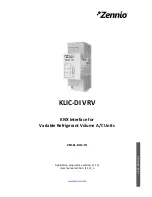
HUAWEI MU509 HSDPA LGA Module
AT Command Interface Specification
Network Service Commands
Issue 04 (2013-01-28)
Huawei Proprietary and Confidential
Copyright © Huawei Technologies Co., Ltd.
183
<stat>:
0: Not registered. The MS is not searching the new operators to be registered.
1: Local network is registered
2: Not registered. But the MS is searching the new operators to be registered.
3: Registration rejected
4: Unknown reasons
5: Roaming network is registered
<lac>: position code information, composed of four characters and expressed in
hexad
ecimal. (Example: “00C3”=“195” in decimal).
<ci>: cell information, composed of four characters and expressed in hexadecimal.
(Extended Information: according to 3GPP Rel7, four characters are requested, but if
before Rel7, for example the currently network is Rel6 mostly, only the last two
characters is valid, the other characters is invalid and should be ignored. For example,
if the <ciI> return 3B3DE1C, only DE1C is valid and could be used as DE1C is the last
two characters.)
14.2 +CGREG–Control GPRS Network Registration Status
14.2.1
Command Syntax
Command
Possible response(s)
+CGREG[=<n>]
<CR><LF>OK<CR><LF>
+CGREG?
<CR><LF>+CGREG: <n>,<stat>[,<lac>,<ci>]<CR><LF>
<CR><LF>OK<CR><LF>
+CGREG=?
<CR><LF>+CGREG: (list of supported <n>s)<CR><LF>
<CR><LF>OK<CR><LF>
14.2.2
Description
The SET command is used to control “+CGREG” to report event proactively.
When <n>=1, and the state of network registration changes, the following will be
reported: +CGREG: <stat>
When <n>=2, and the cell information changes, the following will be reported:
+CGREG: <stat>[,<lac>,<ci>].
The READ command returns the current registration state <stat>. The position
information <lac> and <ci> is reported only when <n>=2.
















































